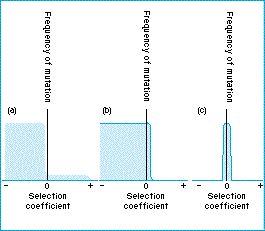Neutralist controversy

The argument between proponents of the neutral theory and selectionists is one of the most prominent in evolutionary biology. The dispute is whether genetic drift rather than natural selection is responsible for most molecular evolution.
Over the past 30 years the controversy has moved through several stages:
1. The amino acid sequences of proteins. In the1960s Kimura suggested that the high rate, and constancy, of protein evolution, and high levels of heterozygosity, could not be explained by natural selection.
2. Kimura's argument proved unconvincing and many biologists accept that natural selection could explain these observations. Further evidence suggested that the levels of heterozygosity are too low for the neutral theory and the molecular clock ticks according to generational, rather than absolute, time.
3. The availability of base sequences for DNA added another dimension to the debate. DNA contains both silent and replacement base positions. It seemed likely that silent base changes - which do not alter the amino acid - would be neutral. It has been confirmed that silent changes have a higher rate of evolution than changes at replacement sites. The evidence also suggests that the evolutionary rate for silent sites is proportional to generation time. Both of these were predicted by the neutral theory.
4. As evidence for DNA sequences has accumulated, the controversy has increasingly moved on from simple generalizations about all molecular evolution, and the aim is more to understand which kinds, or regions, of molecules evolve in which mode.
For silent sites in the DNA, the neutral theory is widely accepted, however it is unlikely that neutral drift is as important in protein evolution as Kimura originally suggested. There remains ample room for disagreement about which molecular evolutionary changes were driven by selection, and which by neutral drift.
Figure: different theories postulate different frequency distributions for the rates of mutation with various selection coefficients. (a) According to the selectionists, exactly neutral mutations are rare and enough favorable mutations arise to account for all molecular evolution. (b) Neutralists believe more neutral, and hardly any selectively favored mutations arise. (c) The theory of pan neutralism, according to which all mutations are selectively neutral.
| Next |



